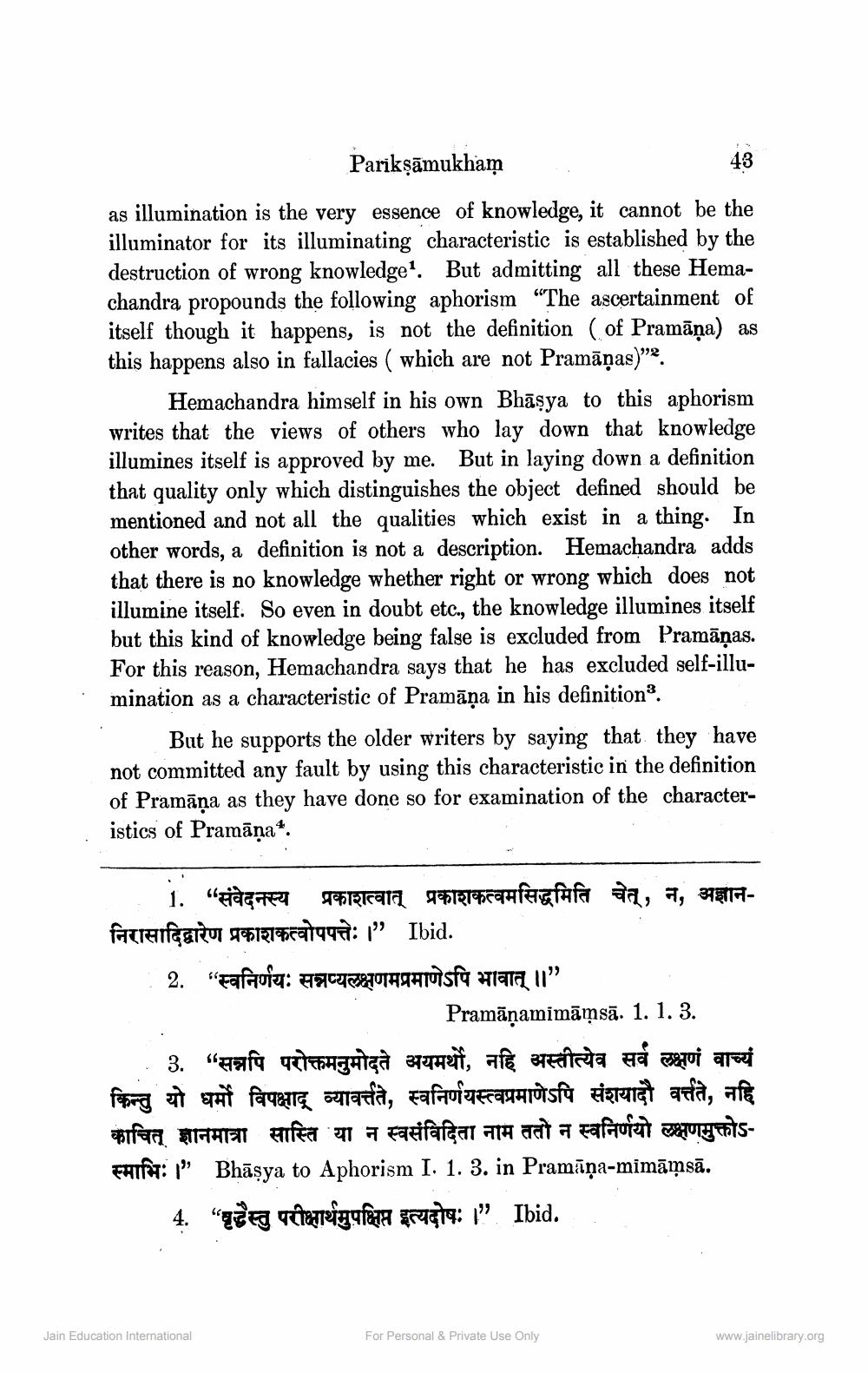________________
Pariksāmukham
as illumination is the very essence of knowledge, it cannot be the illuminator for its illuminating characteristic is established by the destruction of wrong knowledge“. But admitting all these Hemachandra propounds the following aphorism “The ascertainment of itself though it happens, is not the definition of Pramāņa) as this happens also in fallacies ( which are not Pramāṇas)".
Hemachandra himself in his own Bhāșya to this aphorism writes that the views of others who lay down that knowledge illumines itself is approved by me. But in laying down a definition that quality only which distinguishes the object defined should be mentioned and not all the qualities which exist in a thing. In other words, a definition is not a description. Hemachandra adds that there is no knowledge whether right or wrong which does not illumine itself. So even in doubt etc., the knowledge illumines itself but this kind of knowledge being false is excluded from Pramāņas. For this reason, Hemachandra says that he has excluded self-illumination as a characteristic of Pramāņa in his definition?.
But he supports the older writers by saying that they have not committed any fault by using this characteristic in the definition of Pramāņa as they have done so for examination of the characteristics of Pramāņa.
___ 1. "संवेदनस्य प्रकाशत्वात् प्रकाशकत्वमसिद्धमिति चेत्, न, अज्ञानFACreigento 9473196419487: 1” Ibid. : 2. "Fafarofa: FACUZTATATÜS Haralı”
Pramāṇamimāņsā. 1. 1. 3. - 3. "सन्नपि परोक्तमनुमोदते अयमर्थो, नहि अस्तीत्येव सर्व लक्षणं वाच्यं किन्तु यो धर्मो विपक्षाद् व्यावर्त्तते, स्वनिर्णयस्त्वप्रमाणेऽपि संशयादौ वर्तते, नहि काचित् ज्ञानमात्रा सास्ति या न स्वसंविदिता नाम ततो न स्वनिर्णयो लक्षणमुक्तोऽFHIFT” Bhāşya to Aphorism I. 1. 3. in Pramīņa-mimāṁsā.
4. "Peg Talanteiga faza rete: ?. Ibid.
Jain Education International
For Personal & Private Use Only
www.jainelibrary.org




